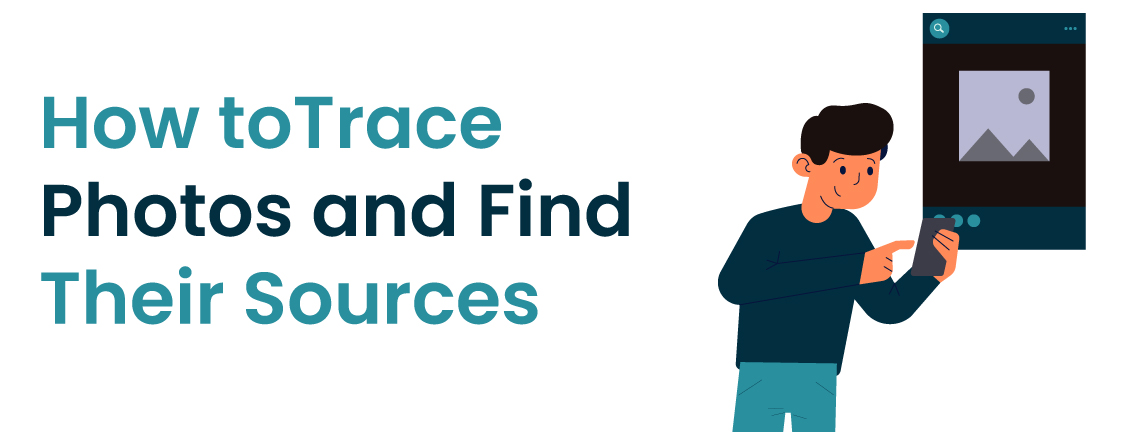Images are uploaded online every day in millions. There are images meant by creators and those that have been reused without referencing. You come across an image and ask yourself, Where is that image? Or "Who owns this?" You can confirm ownership by tracing the original source of a picture. This will reveal its authenticity and help identify fake profiles.
It's not only about curiosity anymore. It's all about maintaining originality, credibility, and staying informed.
We'll talk about easy ways to trace photos back and their source.
Are you ready to find out more? Continue reading to learn more!
Why Is It Important to Trace Pictures?
Tracing photos is done for a variety of reasons. It is very nice to test the authenticity of pictures, to secure the digital world, and to find out the truth. The tracking process of your images can also be important to maintaining trust on the internet, be it for personal, academic, or commercial usage. Here are the details:
-
Verify authenticity: Many photos posted on social media platforms have been edited or re-posted without context. One can also trace an image and ascertain its source, and therefore will be looking at a reliable image as opposed to one that has been distorted.
-
Secure your copyright: Photographers, content operators, and artists depend on traceability in order to find out who has been using their work without authorization. Online image search will enable them to assert ownership and sue in case of necessity.
-
Get real: Trace is used by reporters, bloggers, and businesses to verify the authenticity of visuals before posting. It assists in minimizing the transmission of fake news and makes one credible. This will also mean that pictures are from reputable or checked sources.
-
Stop identity abuse: It may be necessary to track the image of stolen profile pictures and personal photos used on impostor accounts. This may be employed to identify online fraud or cases of impersonation on social media and dating sites.
Researchers, educators, and students trace photos in order to find their original sources or better versions. They can then cite the photo correctly, find context to use in academics, and learn more about a historical event or topic.
How to trace a photo & find its original source?
You need an online tool to trace your photos and see where they appear on the Internet. Reverse Image Online (RIO), Google Lens, and PimEyes are some of the tools that let you find and analyze pictures on the web.
Explore how to use these tools in order to find the source of a photograph.
Reverse Image Online
Reverse Image Online, a tool dedicated to finding the source of an image by using artificial intelligence, is available for free. It searches the Internet for identical or visually similar images. It is easy to use, and you can begin your search in seconds. The interface is simple and works well on desktops as well as mobile devices.
Anyone who wants to verify images that are shared on social media sites, news websites, or online shops will find this tool useful. Reverse Image Online is a great tool for anyone who needs to verify images shared on social media, news sites, or online stores.
Core Features
- This tool pulls images from major search engines for a more comprehensive image match.
-
Drag and drop an image into the search box.
-
If you don't own the image file, paste an image link.
-
Uploading images to the platform is not possible.
-
This tool can identify images that have been cropped or resized.
Google Lens
Google Lens is a tool powered by AI that allows you to search the internet using images rather than text. Google Photos, Chrome, and the Lens app on mobile all have it built in. You can use your camera to search for similar images in real-time, scan a screenshot, or scan a photo.
Google Lens does more than just match photos. It can detect products, places, and objects within an image. It is useful for tracing photographs, but also for translation, shopping, and research.
Core Features
-
Instantly identify objects, landmarks, or products from a picture.
-
Find out where an image is being used on the Internet.
-
Photos and the mobile app are available in Google Chrome.
-
Take a picture with your camera to get instant results.
-
Text in images is recognized and translated.
PimEyes
PimEyes, an advanced facial recognition tool, focuses on finding faces that are similar across the internet. PimEyes, unlike traditional image search engines, is designed to track your personal photos and check if your face appears anywhere else online.
Professionals and individuals use it to make sure their images are not misused. The system uses public databases and websites to find matches with great precision.
Core Features
-
Designed to trace faces on photos.
-
Deep learning algorithms can detect faces that are partially visible.
-
You can review past searches and results.
-
You can request that your images be removed from the search results.
-
Both free and premium options are available for detailed analysis.
Final Words
It is easy to reverse-image photos online using Reverse Image Search, Google Lens, and PimEyes. Every tool is of a particular purpose, with either face recognition, a real-time object, or a search in a general format. These tools offer protection of content in case you are a producer. They assist consumers in checking authenticity. Living in the age of the proliferation of digital content more than ever, knowing how to trace the images will enable you to be knowledgeable and safe. Honor copyright legislation, verify sources, and locate image sources as well as trusted equipment. This will cushion your online reputation as well as develop a transparent digital environment.

